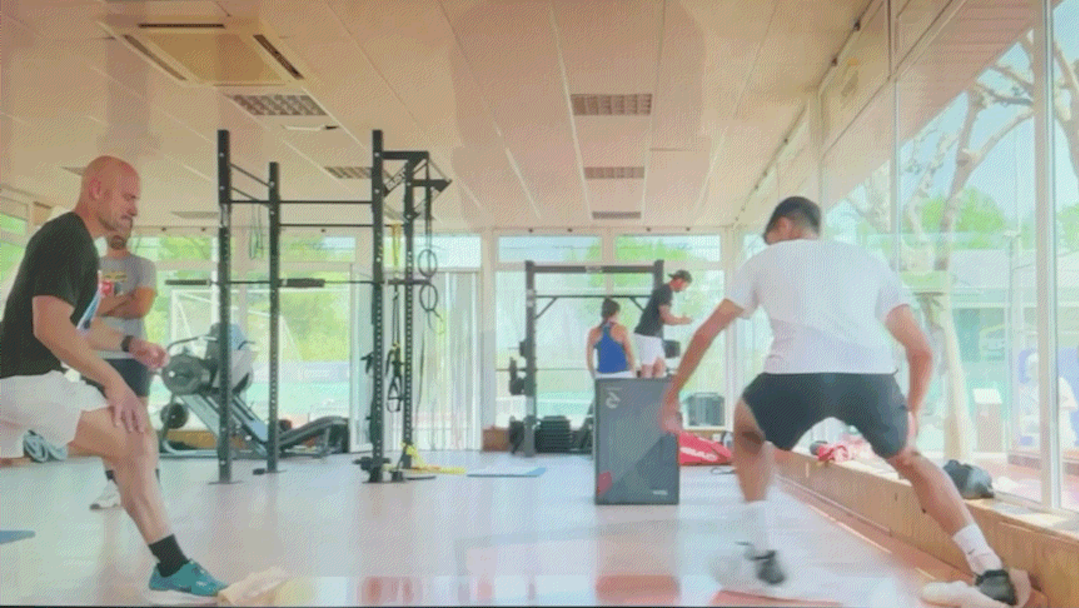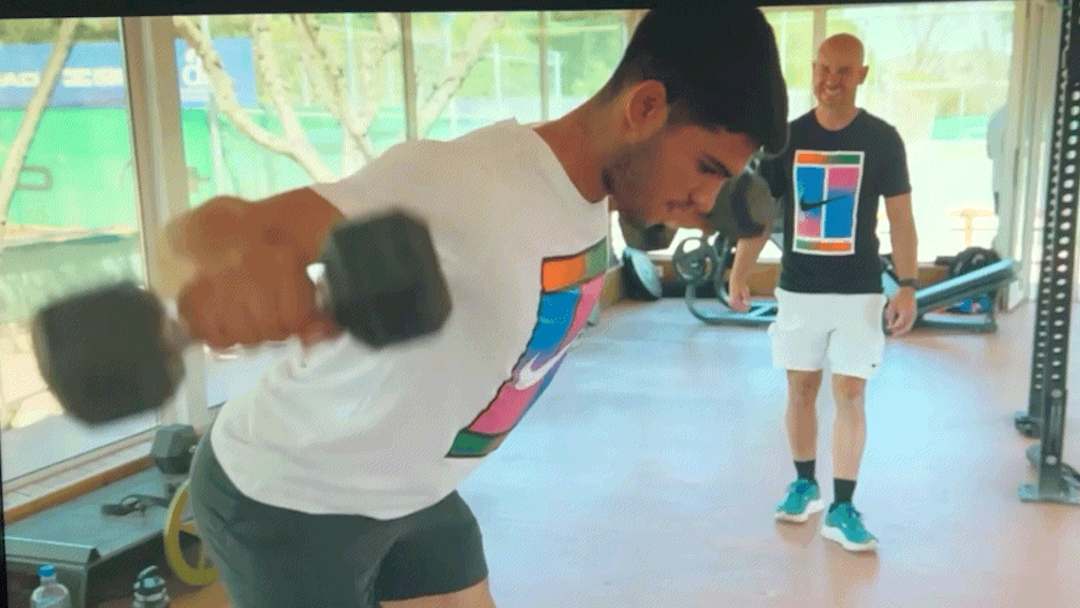As I have frequently mentioned on this site, I recently suffered from plantar fasciitis for almost two years. Apparently, my arduous and painful journey with that affliction is not uncommon for tennis players. While dealing with that injury, I cobbled together a stretching routine that was a key part of my recovery. It has become an indelible part of my daily routine that will hopefully prevent recurrence.
A few weeks ago, a friend left a comment asking me to describe my stretching routine. I quickly realized that simply listing the exercises and durations wouldn’t be clear at all. For one thing, what I call some of the moves aren’t necessarily what everyone else calls them. Additionally, a multitude of variations means that more explanation is necessary to clarify exactly what is intended, even for people who understand the move. As I write about the first exercise in my stretching routine today, it drives that point home.
“Yoga Toes” is the opening exercise in my stretching routine. The name is what an Airrosti physical therapist wrote down when it was first prescribed for me. The variation I perform starts by standing on a mat and raising only my big toes while trying to keep the other toes flat on the floor. I hold that position for a couple of beats before returning them to the mat. The second half of this move is to lift the other four toes while trying to leave the big toe down. That alternating sequence is performed for 30 seconds. The “Yoga Toes” interval is included in my sequence two additional times.
This is the perfect time to repeat something I have said a few times in the past. I highly recommend Airrosti to anyone suffering from plantar fasciitis. My condition had gotten so bad that I doubt I would have recovered without that treatment and physical therapy. The care I received made an immediate difference for me. Should I ever experience a recurrence of plantar fasciitis, I will immediately make an appointment with Airrosti. (This is not a paid endorsement. I am just a happy customer.)
One of the things I learned when writing this post is that “Yoga Toes” has a lot of variations. One is standing with the ball of the feet and heel on the mat while raising the arches. Others include using the toes to pick up marbles or scrunch up towels. Each of those sounds like something that would also help plantar fasciitis.
The Yoga Toes exercise appears to be deceptively simple, but it is a very effective exercise for improving mobility and strength in the arch of the foot and toes. It works because plantar fasciitis is usually rooted in mobility issues in the toes, Achilles tendons, and calves. When those areas are tight or weak, they create excessive strain on the plantar fascia, which leads to pain and inflammation. So, while Yoga Toes will likely help with the condition, it is not the only thing that should be done.
I have an embarrassing lack of mobility in my toes. Believe it or not, the animated gif below captured within the past week reflects a significant increase in independent motion between the big toe and the other four. Consequently, the image below shows that my best efforts don’t reflect very good form. It is a stark reminder that I really need to work on my form.

If you’re dealing with plantar fasciitis or just looking to improve foot health, I highly recommend giving Yoga Toes a try. It’s a small effort with a big impact!




I took three sessions of acupuncture on a cruise and it finally healed my plantar facetious after 1.5 years of fighting it. I love the yoga toes stretch and am going to add it to my feet stretches!